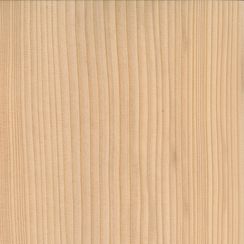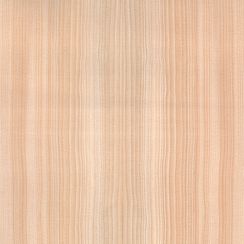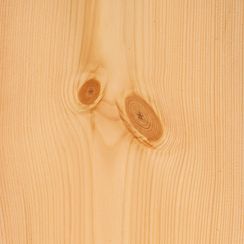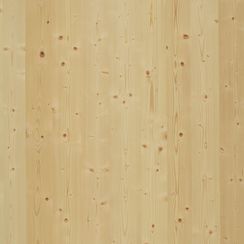Make an appointment at our concept.room for your individual project consulting
Veneer Spruce Norway with knots
BackDetailed Description
A large tree that, depending on the location, can reach heights of up to 50 m and diameters of up to 200 cm. The shaft is very slender, columnar and strongly tapering, with plate-shaped roots, making it very exposed to wind breakage. The bark is light brown, becoming reddish grey to reddish brown with age, up to about 10 mm thick and peeling off in scales.
Tradenames and other names
Bot. Name: Picea abies
Tradename De: Nordische Fichte, Europäische Fichte, Gemeine Fichte, Weissholz, Fichte
Tradename En: Whitewood, Knotty Pine, Spruce
Properties
Raw density: 430 - 470 Kg/m3
Occurrence
Widely distributed throughout central, northern and northeastern Europe, from the 69th parallel north of the Pyrenees to Russia and Scandinavia.
Characteristic and wood color
Sapwood and heartwood are hardly distinguishable. There is no heartwood colouration. Only in northern Europe and in humid locations the heart is slightly reddish. The wood is very light yellowish-brown, often almost whitish and without any special markings. It has a light, natural shine. The annual rings are strongly marked by the difference between the lighter early and darker late wood. Spruce differs mainly from fir by fine, but not very numerous resin ducts, which are difficult to detect. The grain is very straight throughout, the texture is medium coarse to fine and even.








